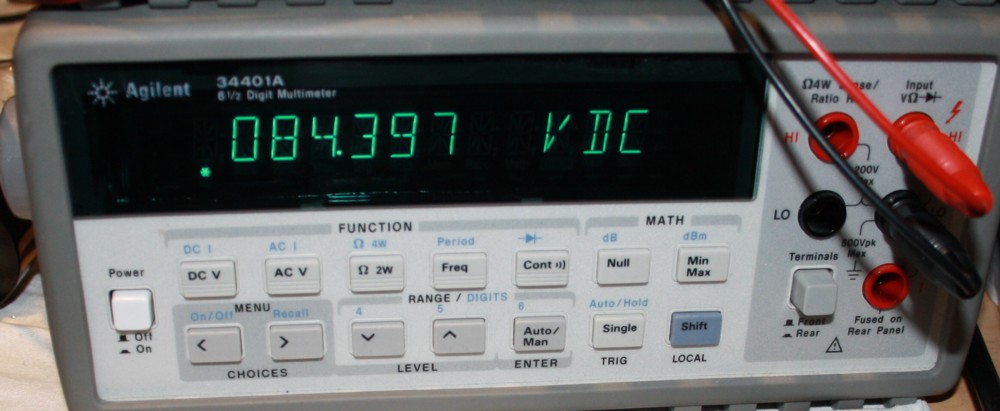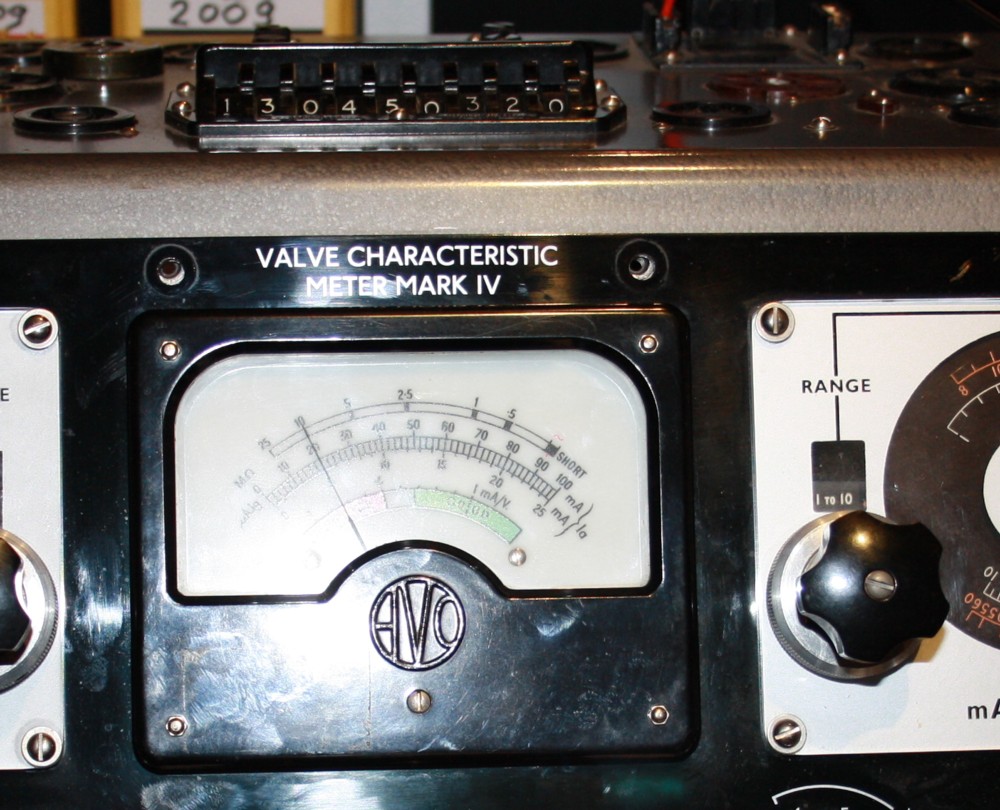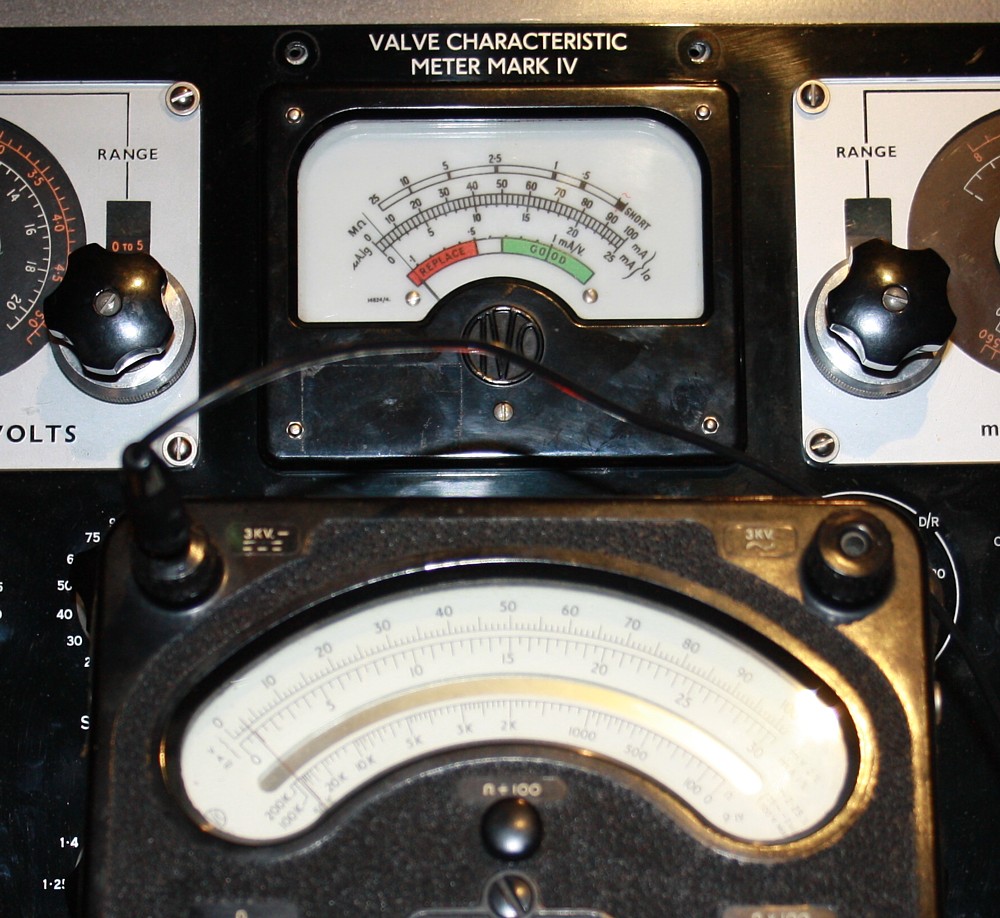The function of the Ohms Meter of the AVO Mk4
(Last updated:
02-Jul-2015 15:52
)
Follow @emissionlabs
© COPYRIGHT INFORMATION All Rights Reserved
![]()
First, you need to be aware, AVO company has measured all voltages inside the MK4, using an AVO8 Multimeter. So when you use the calibration manual, and want to verify voltages, you should be using an AVO8 ideally. This is really a nice meter to have on your bench, as it does a few things, even today no digital meter does. Of course a digital meter is more accurate, we all know that, BUT... then we need to talk about the specified accuracy in the manual, and that is always related to full scale. So when you measure 3 Volts at the 10 Volts scale, you have 3x more error. Unlike with analog meters that keep their "percentage" for a great part, and some can be 1%. Well it's no discussion a 400$ Fluke does a better job than an analog meter. However the AVO8 still can be very usefull for the following:
1) Repeat measurements the same way as AVO did, to write the MK4 manual.
2) Measure up to 3KV AC or DC.
3) Measure voltages with a stunning 20 Mega Ohms impedance if set at 1kV. My 1000 Euro Agilent 334401A can't do that
4) Use it as a precision resistor load, while at the same time measure current through it. VERY NICE to test leakage test function of any tube tester.
5) Provide "Average" result of a waveshape, with theoretical ideal precision.
6) Use it as a 50uA full scale DC meter. Very few digital meters can do so.
7) Measure the 30uA current of the Mk4 panel meter, via the Anode Links. Really I trust no other meter for this, as the wave shape is nor sinusoidal.
So the above, is what I use my AVO 8 for. When you want to buy one, prices on Ebay absolutely do not reflect what they are worth. Generally, the older they are, the more trouble the make. So I would never buy an antique one for the intention to use it. Buy them as young as you can get them, but stay away from the later models. Those are the Mk5, Mk6 and Mk7. These have laser tuned resistors inside, which may have been nice for the moment, but these have not been laquered after calibration. So they just "burned" the edges corners of a ceramic substrate resistor until it had the required value, and leave the burn marks unprotected against air. The "burn" process deserves that word. So these are generally suffering today from accuracy problems. Furthermore, they have foil PCB connectors inside, the "modern" way to replace wires, but these are first generation, they melt too fast, and you need to de-solder them to take the meter apart. So these are not just service unfriendly, I would call them unserviceable. Then, these have some red, rubber foil stuff for the "cut off" and "Reverse" buttons, which gets brittle, and when it does, there is an openig from the outside world to the meter coil. Some people pull that off when it gets cracks, so they look nicer on Ebay. Like that magnetic particles can come in easily. Also since the newer types have no better specifications that the older ones, the only recommended meter to buy is AVO8 Mk4. Any Mk3 can be rusty inside, better go for Mk4, while Mk1 and Mk2 are antique, not suited for daily use. Here is a website with nice information about the AVO Multimeters.
And now for the AVO tube tester itself...
The function of the Ohms meter is really excellent. And unique too. It tests with a relatively high voltage of 85 Volts, which voltage I tried to measure. The test circuit is protected with a very high internal series resistor, meaning the short circuit current is a remarkable low 27uA. So you can not damage even semiconductors or anything. So if the circuit under test would tend to draw a lot of current at 85 Volts the internal current gets limited at maximum 27uA, and yet the measurement is accurate. You need to think about this a few times, and you start understand what you have here.
In the next picture I attached a 50 years old AVO-8 meter to the terminals, and let's see what it does. The AVO-8 is 20kohms per Volt, so setting it to 1000Volts means the meter is 20Megaohms. Now first, I don't have a precise resistor of 20Mega Ohms, but I am 100% sure this AVO-8 gives an exact 20Mega Ohms, so just use it like this. On the meter you can see the 20Mega Ohms is indicated correct, though the scale line "20" is missing.

Current flow is 3uA with the AVO-8 attached. (The Zero Ohms reading of the Mk4 tube tester equals 27uA)
Sorry fo the crappy picture quality, it is made with a CANON EOS1000D.

Here is a little bit better picture of the voltage measured. It is 86Volts on this meter. This meter is fully exact,
I have verified all ranges against the Agilent 34401A. There is no difference whatsoever, on all scales.

Now I connect an Agilent 34401A. At this moment the industry standard meter, indisputable.
This meter is also fully exact. Yet it is at 84Volts. So where has the two Volts gone?

Current flow is 6uA with the Agilent 34401A attached. (The Zero Ohms reading equals 27uA)
Got you! Here has the 2 Volts gone. The Agilent 34401A is 10Mega Ohms on Auto Range, so it puts more load on the Mk4 circuit.
Whereas my good old AVO Mk4 is 20 Mega Ohms. I am not going to read the manual, so see if this is true.
Just look at the Mk4 meter, and there you can see it clearly. Isn't that interesting to see this 50 years old analog meter
have TWICE the impedance of this state of the art electronic meter. I never would have thought so!

For very high voltage you can set the AVO-8 to 3kV range, and it becomes 60 Mega Ohms.
I do not try to measure voltage this way, though you can recognise 30 on the upper scale, which means 90Volt. What I use the AVO-8 for here, is to get a very precise 60 Mega Ohms resistor. So you can see at the AVO Mk4 meter, 60 Mega Ohms is two divisions at the 100mA scale.
I have put two AVO-8 in series to get 120 Mega Ohms, and this gave a reading of one scale division on the 100mA Scale, with the MK4. This is 300nA.
Since the reading in Mega Ohms rises very fast at the left side of the scale, I estimate the beginning of a needle movement at 500 Mega Ohms.